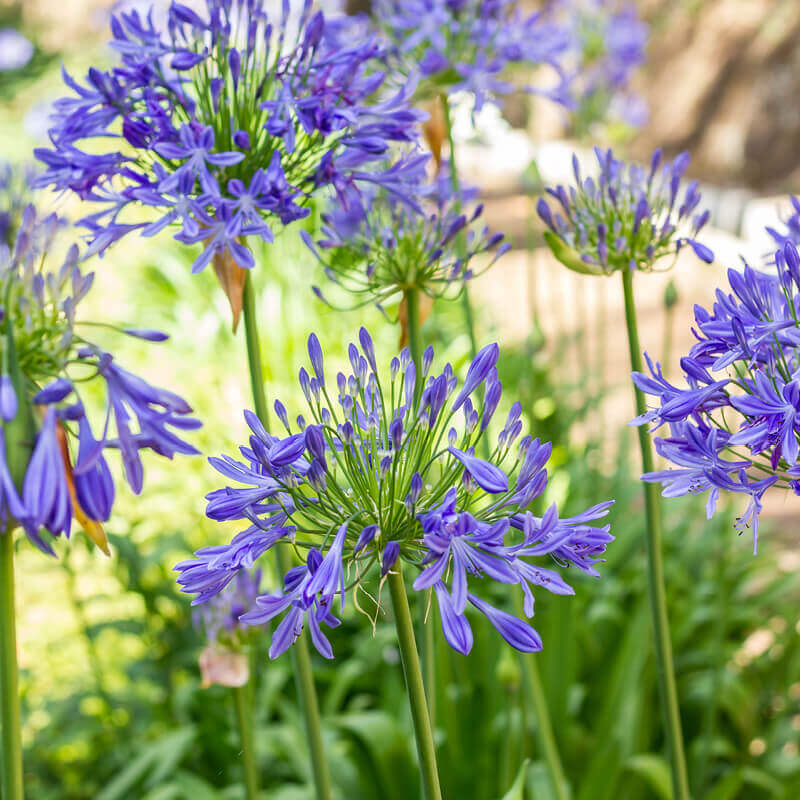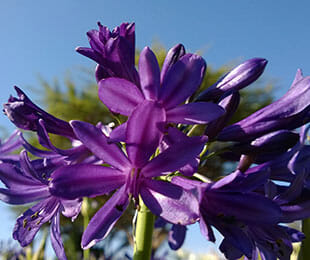Mastering the Art of Agapanthus Treatment: Vital Actions for Healthy Development and Lively Blossoms
In the realm of cultivation, the growing of agapanthus stands as a rewarding venture for those who look for to nurture these stylish blooming plants. With their striking blossoms and elegant foliage, agapanthus has actually caught the focus of gardeners worldwide. However, achieving optimal growth and dynamic blooms requires a nuanced method that incorporates numerous essential steps. From picking the best range to grasping pruning techniques, the journey in the direction of growing prospering agapanthus plants is multifaceted and holds the vital to opening the complete possibility of these agricultural treasures.

Selecting the Right Agapanthus Variety

When choosing the best Agapanthus selection for your garden, think about aspects such as environment viability, flower color, and growth routine. Furthermore, consider the environment in your area to guarantee the Agapanthus variety you pick can prosper in your specific conditions. Comprehending the development routine of different Agapanthus selections is important for proper placement within your garden.
Suitable Planting Problems
Considering the optimum environmental demands is essential for effective Agapanthus farming. Agapanthus flourishes in well-draining dirt with a slightly acidic to neutral pH level. When growing, choose a place that receives full sunlight to partial color. In hotter climates, supplying some mid-day shade can prevent scorching of the leaves. Agapanthus plants are delicate to cool temperature levels and need to be protected from frost throughout winter season.
To ensure healthy growth and vivid flowers, plant Agapanthus bulbs at a depth of regarding 2-4 inches and space them 8-12 inches apart. Mulching around the base of the plants aids maintain moisture and subdues weed development.
Watering and Feeding Tips
Preserving appropriate wetness degrees and providing necessary nutrients are vital components in the treatment routine for Agapanthus plants. It is important to strike an equilibrium when it comes to watering Agapanthus. These plants favor consistently moist soil but are prone to root rot if overwatered. During the expanding period, water deeply once a week, ensuring the dirt is well-draining to avoid waterlogging. In hotter climates or during durations of drought, more constant watering might be essential to maintain the soil uniformly moist. Nonetheless, lower watering in the wintertime to stop waterlogged problems.
Feeding Agapanthus is necessary for promoting healthy and balanced growth and prolific blooms. Use a balanced plant food, such as a 10-10-10 formula, in the very early spring great post to read as new growth emerges. By following these watering and feeding pointers, you can ensure your Agapanthus plants flourish and generate dynamic, lasting flowers.
Trimming Strategies for Agapanthus
Trimming Agapanthus plants at the suitable times and with appropriate techniques Click Here is vital for keeping their health and wellness and advertising ideal growth and blooming. The suitable time to trim Agapanthus is in late winter season or very early springtime prior to brand-new development emerges.
For flowered stems, wait until the flowers have perished and after that cut them back to the base. This not just cleans the plant's appearance yet also urges the growth of new flower buds. Deadheading spent flowers can likewise reroute the plant's energy into creating more blooms as opposed to setting seeds. Nevertheless, if you want to collect seeds for breeding, leave some blossoms to completely dry and mature on the plant.
Keep in mind to use tidy, sharp tools to make exact cuts and reduce the risk of presenting conditions. Agapanthus. Regular trimming will certainly aid keep your Agapanthus looking neat and healthy while making sure an abundant display of gorgeous blooms
Handling Common Insects and Conditions
After guaranteeing correct pruning techniques for Agapanthus, it is vital to attend to typical insects and conditions that can affect the health and wellness and vitality of these plants. Agapanthus plants are generally sturdy but can still drop victim to specific issues. One common bug that influences Agapanthus is the Agapanthus gall midge. This small, orange fly lays its eggs in the vegetation, resulting in distorted growth and blossom buds that fail to open. To battle this parasite, prune and ruin any kind of afflicted plant components and think about utilizing insecticidal soap.
In addition, Agapanthus plants can suffer from origin rot if they are grown in improperly draining dirt. By being attentive and taking punctual activity versus pests and diseases, you can help your Agapanthus plants thrive and generate vivid flowers. Agapanthus.

Final Thought
In final thought, understanding the art of agapanthus treatment involves picking the appropriate selection, supplying optimal planting problems, proper watering and feeding, suitable trimming methods, and attending to common pests and conditions. By complying with these vital steps, you can make certain healthy development and vivid blooms for your agapanthus plants. Keep in mind to frequently monitor and preserve your plants to promote their general health and longevity.
To make certain healthy and balanced growth and vivid blooms, plant Agapanthus bulbs at a deepness of about 2-4 inches and area them 8-12 inches apart. By following these watering and feeding ideas, click reference you can ensure your Agapanthus plants prosper and generate vivid, durable flowers.
One usual parasite that influences Agapanthus is the Agapanthus gall midget. Additionally, Agapanthus plants can experience from origin rot if they are grown in improperly draining pipes dirt. By following these vital actions, you can make sure healthy growth and lively flowers for your agapanthus plants.